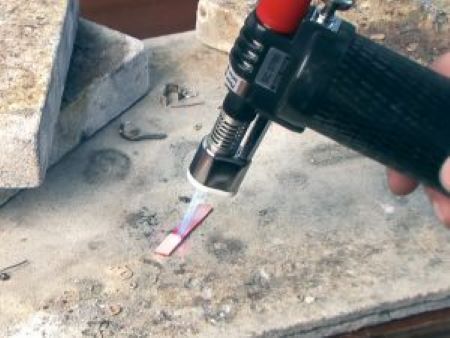Soldering is an essential skill for jewellery makers, especially when working with intricate designs or fragile materials. Delicate pieces demand extra care to avoid damage, maintain precision and ensure a professional finish. Below, we’ll explore the best techniques to achieve perfect soldering on delicate jewellery projects.
1. Use the Right Solder and Flux
The choice of solder is vital when working on delicate pieces. Opt for a solder with a lower melting point, such as easy or extra-easy solder, to minimise the risk of overheating your materials. Pair this with a flux designed for the metal type you’re working with to ensure smooth flow and prevent oxidation.
Tip: Clean your metal thoroughly before applying flux and solder. Contaminants can lead to uneven soldering and weaker joints.
2. Invest in a Precision Torch
A precision torch with a small, controllable flame is a game-changer for delicate soldering (997 D040). Torches with fine tips allow you to direct heat exactly where it’s needed without affecting surrounding areas. This is particularly useful for soldering thin wires, filigree, or intricate prong settings.
3. Pre-position Your Solder
Pre-positioning small amounts of solder on your join ensures accuracy and reduces handling during the heating process. Use soldering tweezers or a probe (999 AAFD) to place tiny pieces exactly where you need them. This method minimises the risk of misalignment while heating.
4. Control Heat Distribution
Delicate pieces can easily warp or melt under excessive heat. To avoid this, heat the entire piece evenly before focusing on the join. This prevents cracking or distortion.
5. Work on a Stable Surface
Stability is key when working with fragile pieces. Use a soldering board or ceramic block to position your work securely. Soldering blocks (999 968) and honeycomb boards (997 1652) can also help direct heat and prevent movement.
6. Cool Gradually
Rapid cooling can weaken joints or cause stress in the metal. Allow your piece to cool naturally or submerge it in room-temperature water. Avoid using ice-cold water, which can create thermal shock causing your piece to crack.
7. Clean and Polish the Joint
After soldering, remove any remaining flux and oxidation with a pickling solution. Delicate pieces may require gentle polishing techniques, such as using a soft polishing wheel or hand-buffing to restore their shine without damaging intricate details.
8. Patience
Working on delicate pieces often requires a slower, more methodical approach. Rushing can lead to mistakes or damage. Take your time, and don’t be afraid to pause and reassess your progress.

Soldering delicate jewellery is a skill that improves with practice, patience and the right tools. By following these techniques, you’ll be able to confidently tackle intricate designs, ensuring a great finish every time.
Head over to our website to find out more about soldering or click here to see all of our soldering products.

Sian Brown
Sian has been hand making her award winning jewellery in the West Midlands for over 12 years. Sian spent 10 years in Birmingham’s historic Jewellery Quarter before relocating to a quiet Worcestershire village.

